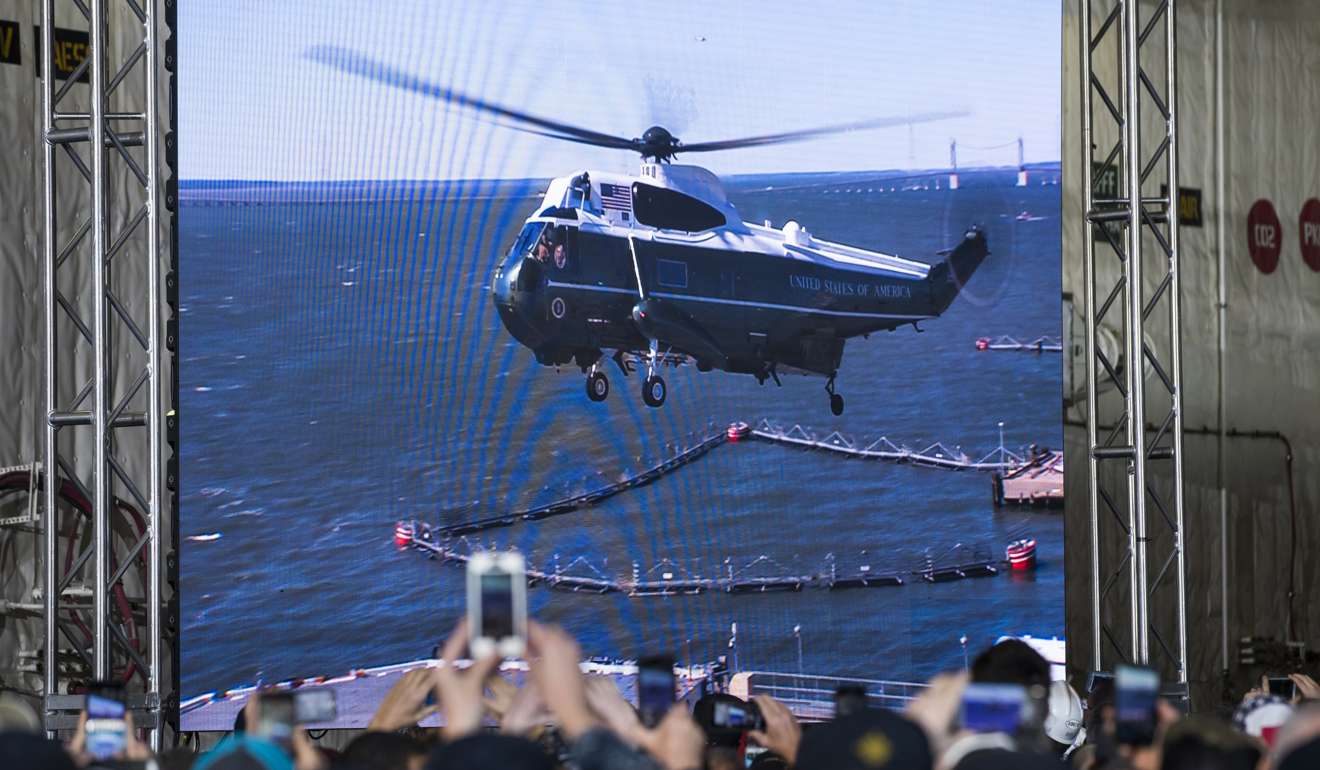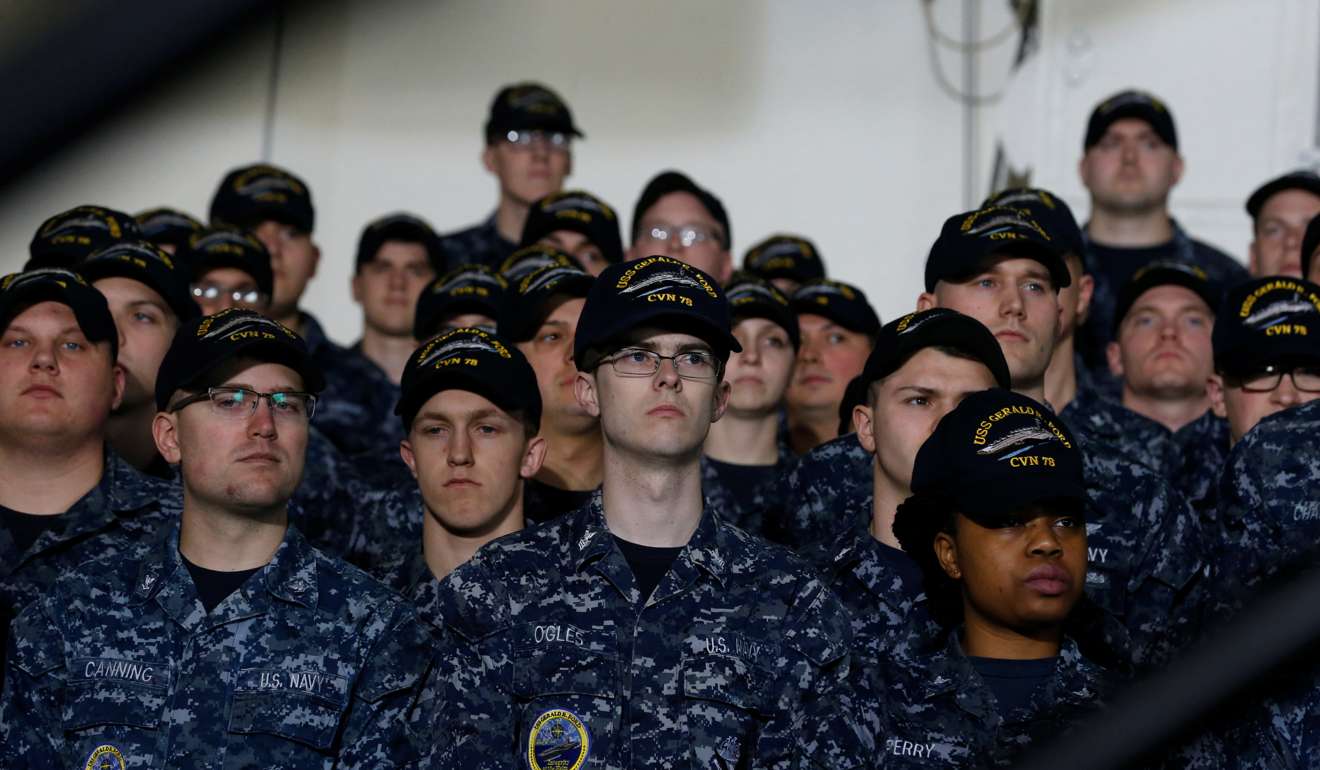
Trump vows massive US military buildup on over-budget carrier
President Donald Trump said that his defence secretary, James Mattis, will lead a “great rebuilding” of the US military, as he visited a new aircraft carrier whose construction in Virginia is delayed and over budget.
Mattis “will be charged with overseeing this great rebuilding of our military might,” Trump said aboard the USS Gerald Ford, the first of a new class of aircraft carriers under construction at a Huntington Ingalls Industries shipyard in Newport News, Virginia.
“We will have the finest equipment in the world. Planes, ships and everything else,” Trump said. “We will give our military the tools you need to prevent war and, if required, to fight war, and to only do one thing. Do you know what that is? Win.”

Trump has pledged to increase US defence spending, starting with a US$30 billion addition to this year’s budget and a US$54 billion boost that administration officials announced on Monday for the budget year that begins in October. That increase would be offset by cuts from the rest of the government’s discretionary budget.
He has called the US military, the world’s largest, “badly depleted,“ and made increased defence spending a central plank of his campaign.
The US spends more on defence than the next seven countries in the world combined, according to data compiled by the Stockholm International Peace Research Institute and the Peter G. Peterson Foundation.
“I am calling for one of the largest defence spending increases in history,” Trump said, although defence hawks including Senate Armed Services Committee Chairman John McCain has said he isn’t proposing enough.
Additional surface ships and submarines would benefit the nation’s top warship makers -- Huntington and the marine unit of General Dynamics. Increases in the Army would benefit military vehicle builders General Dynamics and BAE Systems Plc, as well as Lockheed Martin and Raytheon, makers of air defence and anti-armour systems such as Thaad, Patriot and the Javelin.
Trump pledged in his campaign to expand the Navy’s fleet to 350 vessels from about 272 today, which the non-partisan Congressional Research Service estimates would cost an average of US$4 billion annually for construction alone.
The Navy set a goal of 305 ships under Trump’s predecessor, Barack Obama. Ash Carter, Obama’s defence secretary, warned about “irresponsibly” exceeding that goal at the risk of sacrificing quality for quantity. But in December, after the election, the Navy echoed Trump in a new assessment, saying it needed as many as 355 ships.
Trump promised that he’ll provide the “twelve-carrier Navy we need.” There are 10 carriers in service today. A second ship in the Ford class, the John F. Kennedy, is also under construction.
The Ford, the first in the planned new class of three carriers, has been plagued by cost overruns and delays. The US$12.9 billion ship was originally scheduled to be delivered in September 2014. The Navy’s latest status report projected delivery in April.

Trump spoke on the hangar deck of the ship, where a banner read “Integrity at the Helm,” the ship’s motto.
“It really feels like a place,” Trump said. “You stand on that deck and you feel like you’re standing on a very big piece of land.”
The ship is to be equipped with advanced systems from a number of subcontractors, including Raytheon and General Atomics.
“With the benefit of hindsight, it was clearly premature to include so many unproven technologies” on the vessel, including systems used for power generation, launching and landing aircraft and its radar and elevators to move munitions, Frank Kendall, who was the Pentagon’s top weapons buyer, said in a memo in August.

